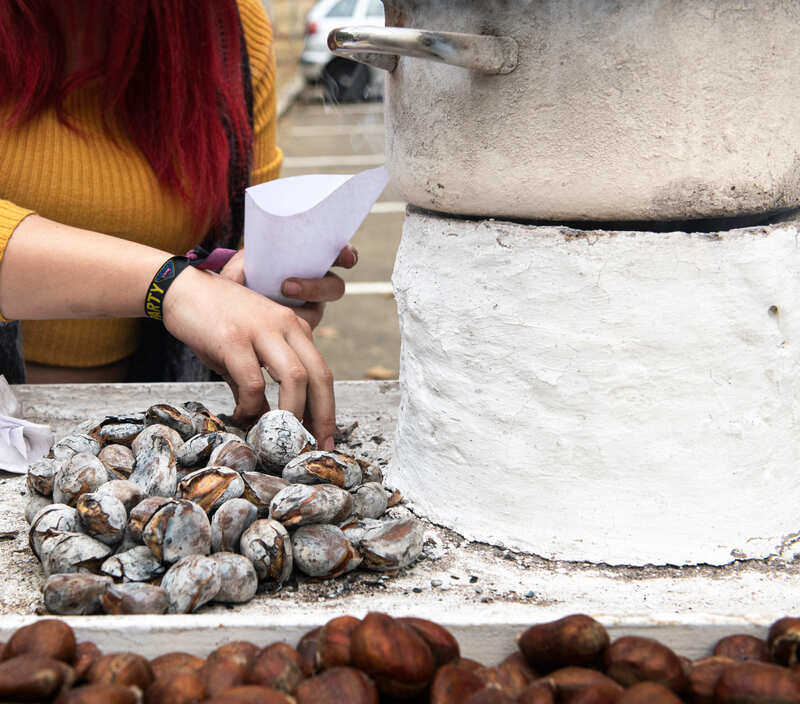Tostonadas and chestnuts

At the beginning of October, up in the humid Andalusian mountains, the chestnut forests turn coppery-orange and drop their prickly husks containing tasty sweet chestnuts. This is when chestnut harvesting begins in mountain areas like the Genal Valley, the Sierra de las Nieves, the Alpujarras and the Sierra de Aracena. And, after the harvest, all kinds of festivities are organised in the villages, these are what the locals call "castañadas" or "tostonadas".
In Andalusia, there is documentary evidence of the presence of sweet chestnut trees since Moorish times. Although their presence was affected at different times in history, here were monarchs who made an effort to repopulate. Today these ancient forests are full of shade, as well as being a great source of wealth and ingredients with a high ecological value in places like the Sierra de Aracena y Picos de Aroche, the Alpujarra in Granada, the Serranía de Ronda, the Sierra de las Nieves a certain towns and villages in the Sierra Morena in Seville, such as Constantina.

A palette consisting of shades of ochre and gold, with a carpet of leaves like a wrapper around the fruit make quite a spectacle. It is for all these reasons that, in autumn, it is well worth visiting the tracks and byways, but you also have the possibility of tasting the roasted chestnuts and a variety of local recipes that use them. In first courses like stews, rice dishes, creams combined with mushrooms and as a garnish for roasts, in desserts and to accompany liqueurs and the first musts of the year.
In the Genal Valley, in the province of Málaga, there is an area called "Bosque de Cobre", where chestnuts roasted in a pot are called "tostones". Around All Saints Day, at the end of the harvest, there are festivities in municipalities like Pujerra, where there is a Chestnut Museum, Jimera de Libar and Genalguacil, a town that proudly presents its open-air contemporary art museum.

The chestnut tree is actually the symbol for the Sierra de Aracena, where the harvest is called the 'apaño' and the gangs of harvesters, 'apañaoras'. There is a small town through which all the routes relating to chestnuts pass: Castaño del Robledo. In Aracena they celebrate the ancestral Festival of the Spinning Wheels, on the eve of the Día de la Inmaculada, when chestnut leaves are strung on sticks that are sealed with the fruit. When the night comes, they are lit up and spun as a sign of purification.

The culture of the chestnut tree also has very deep roots in the Alpujarra, with festivities in Capileira and Bubión, as well as a number of other places. And you should also try chestnut stew, a sweet recipe which involves cooking the fruit with sugar, cinnamon sticks and aniseed. Legend has it that Federico García Lorca liked to enjoy himself among the trees in Lanjarón where he went with his family. There is a poem entitled Canción Oriental, written in 1921, which includes these lines: "Chestnut trees are a symbol of peace in the home. Things from olden times. The crackling of old logs, wayward pilgrims". Is there anywhere more poetic than a forest if chestnut trees? You will certainly find the answer in the chestnut grove in Valdeazores, in Despeñaperros.













